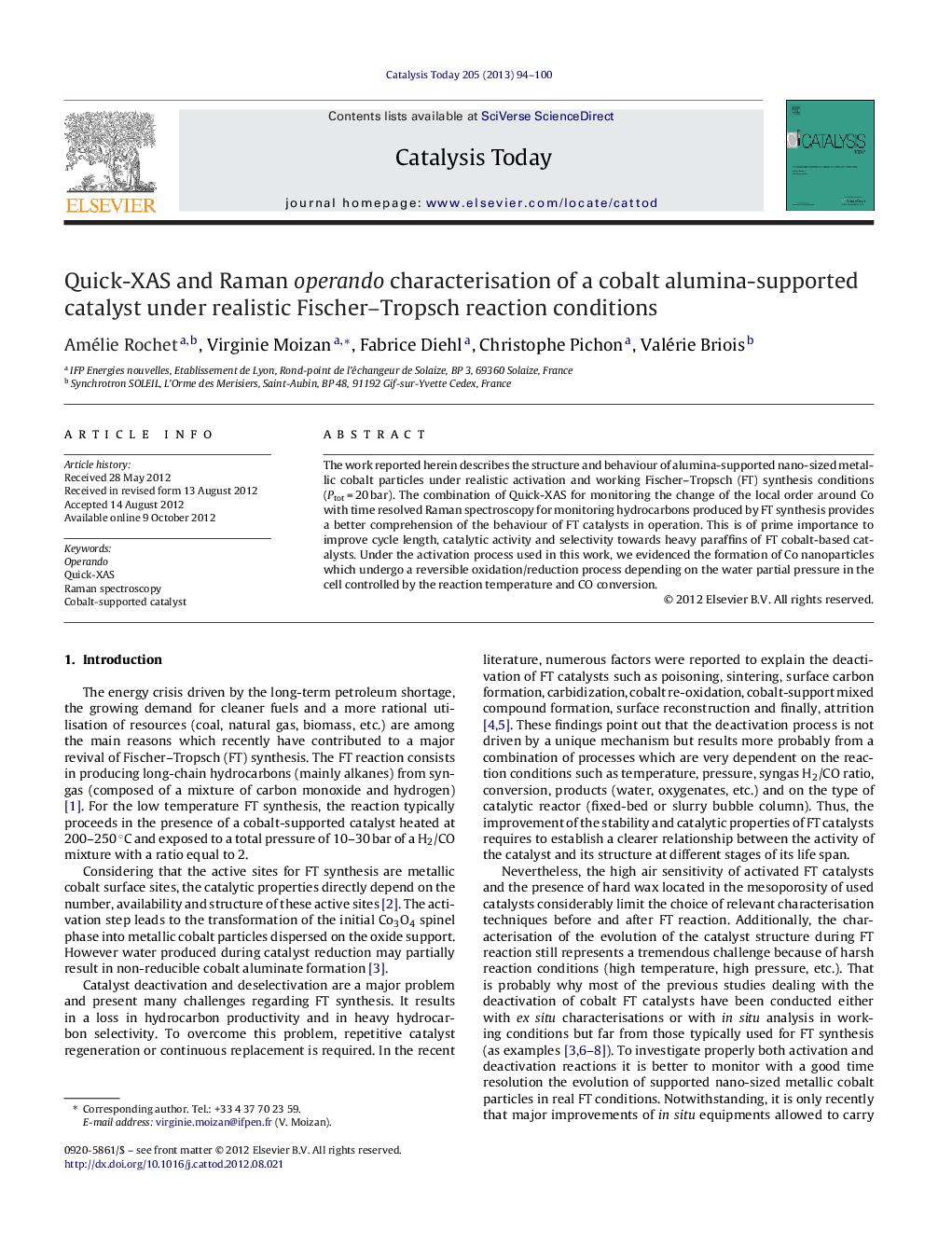| Article ID | Journal | Published Year | Pages | File Type |
|---|---|---|---|---|
| 54933 | Catalysis Today | 2013 | 7 Pages |
The work reported herein describes the structure and behaviour of alumina-supported nano-sized metallic cobalt particles under realistic activation and working Fischer–Tropsch (FT) synthesis conditions (Ptot = 20 bar). The combination of Quick-XAS for monitoring the change of the local order around Co with time resolved Raman spectroscopy for monitoring hydrocarbons produced by FT synthesis provides a better comprehension of the behaviour of FT catalysts in operation. This is of prime importance to improve cycle length, catalytic activity and selectivity towards heavy paraffins of FT cobalt-based catalysts. Under the activation process used in this work, we evidenced the formation of Co nanoparticles which undergo a reversible oxidation/reduction process depending on the water partial pressure in the cell controlled by the reaction temperature and CO conversion.
Graphical abstractFigure optionsDownload full-size imageDownload high-quality image (261 K)Download as PowerPoint slideHighlights► The structural behaviour of cobalt Fischer–Tropsch catalysts was studied. ► Realistic activation and working synthesis conditions (Ptot = 20 bar) were used. ► This study combined Quick-XAS and time resolved Raman. ► Catalytic properties have been obtained by Raman. ► A reversible oxidation/reduction process linked to PH2OPH2O was established.
